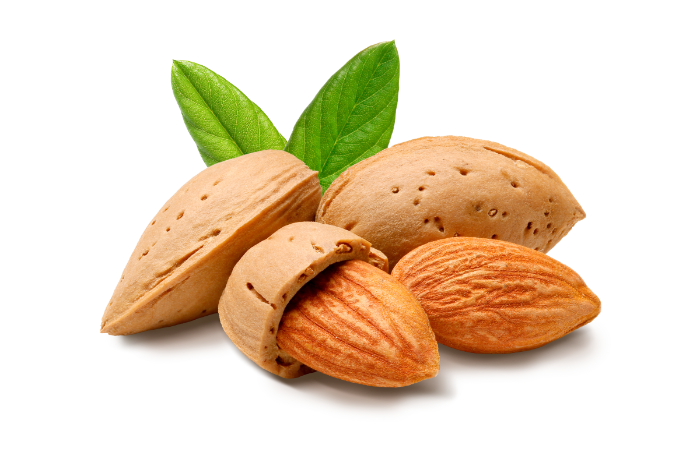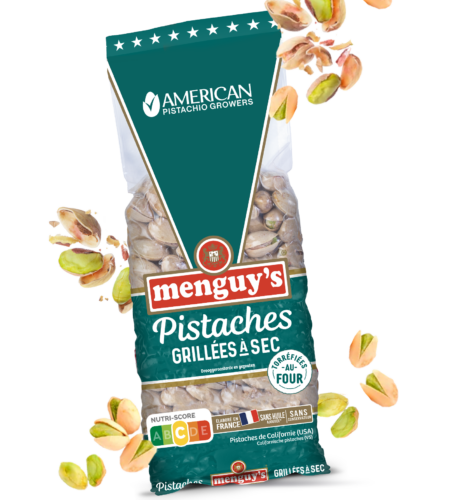
A SYMBOLIC &
HAPPY NUT!
Explorers discovered almonds along the route of the Silk Road… Almond trees then spread along the shores of the Mediterranean, especially in Italy and Spain. They were later established in California during the 18th century. During the 1970s, researchers developed the main varieties grown today in the United States (Non-pareil, Carmel, Monterey etc.).
Sugared almonds in little tulle bags are often given to guests at weddings and christenings to symbolise happiness, good health and prosperity.
ITS BEST FRIEND: THE BEE!
Almond trees grow to a height of 6 to 8 metres. The trees are very sensitive to cold and are therefore cultivated in temperate regions.
There are two types of almond trees: the pink-flowered varieties produce bitter almonds (for making pastries), and the white-flowered varieties produce sweet almonds that are eaten fresh or dried.
Since almond trees do not self-pollinate, male trees are planted at regular intervals so that bees can pollinate the flowers more easily.
The fruit is covered by a green drupe, which bursts when ripe. The core contains a kernel covered with a thin brown tegument.


A WORLDWIDE SUCCESS
The main producers of almonds are the United States, Spain and France. The United States provides 80% of the world’s production, it is their seventh most exported product.
Menguy’s selects its almonds in California, Argentina, Spain and Portugal from producers committed to consistent and impeccable seed quality.









